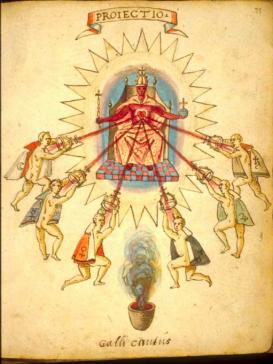Medieval alchemy employed a distinctive language, imagery, and metaphorical expression in its writings. Non-verbal elements played a vital role in this context: they include a large variety of symbols, diagrams, sketches of apparatus and principles, and illuminations depicting metaphorical processes, which were adapted to ever-changing contexts in late medieval manuscripts. While some of these have been studied individually in extant scholarship, this project followed a broader approach to alchemical expression—one that aims to place visual traditions and individual choices into relation with one another.
This project investigated alchemical art and symbols in manuscripts as part of the expression of alchemy, of late medieval written culture and of the emergence of vernacular craft practices. It examined the fifteenth century as a key period in the development of alchemical terminology both in linguistic terms (especially the introduction of the vernacular) and in the expansion of symbols and imagery. How did alchemical practitioners consolidate their beliefs about alchemical theory, and their experiences in the alchemical workshop, with these miscellaneous forms of expression? The identification of practice-derived types of alchemical expression and the study of scribal choices form the heart of this project. Code switching between visual and linguistic elements and their implications for the history of medieval scientific notation was examined. Manuscripts considered for this study were of northern European origin, mostly German and English.

